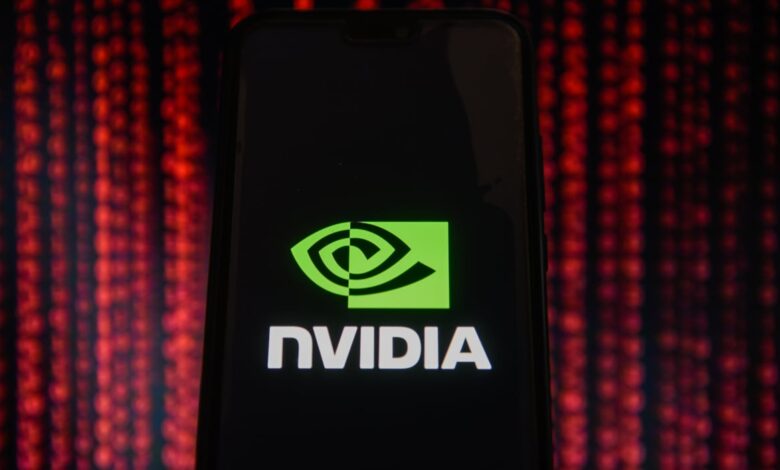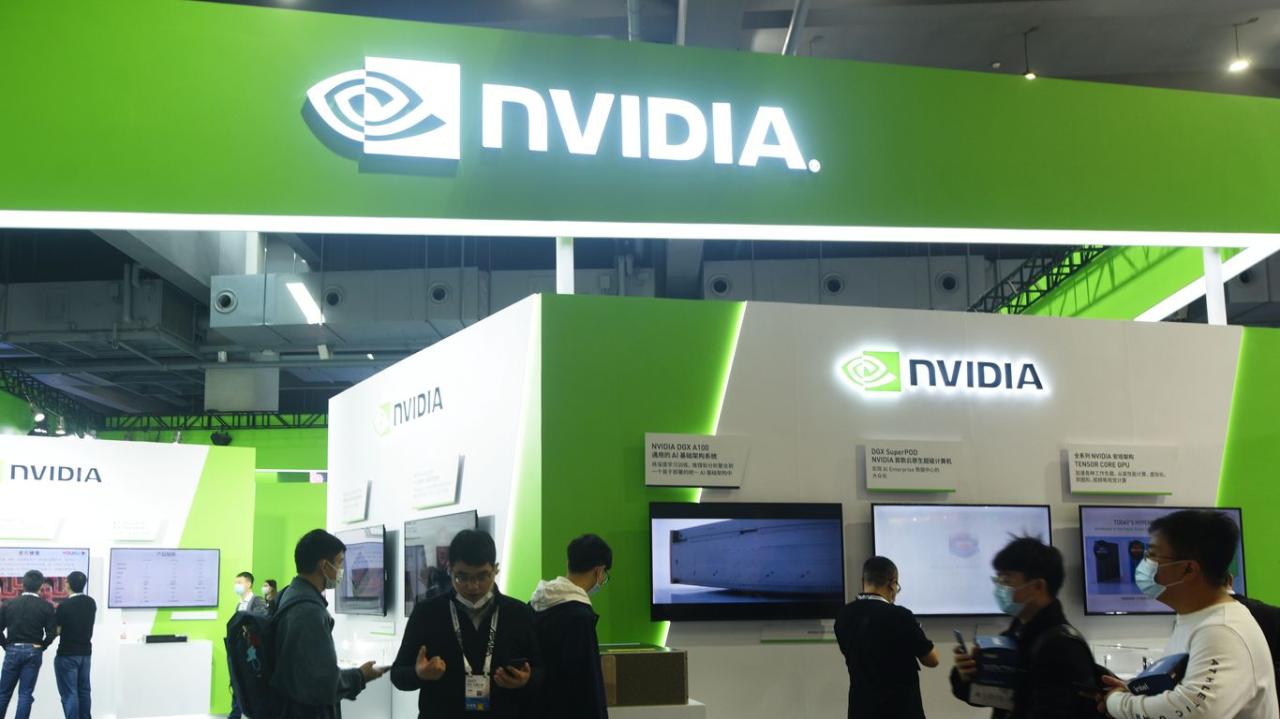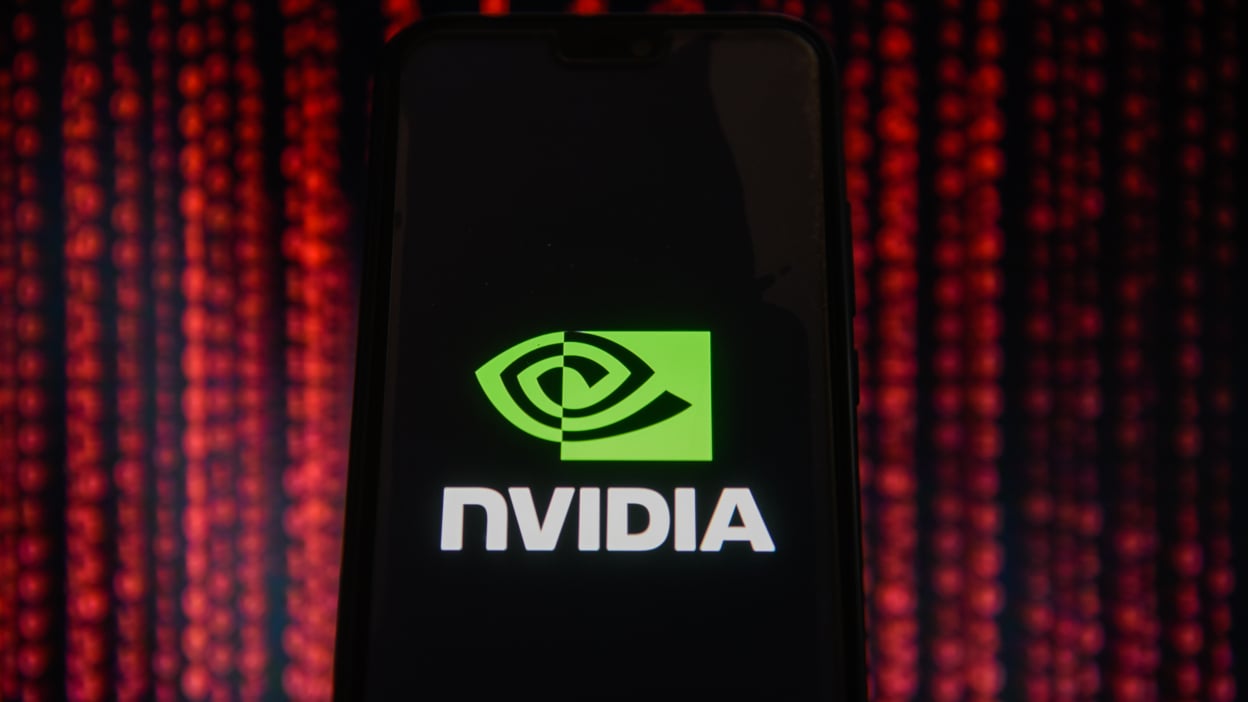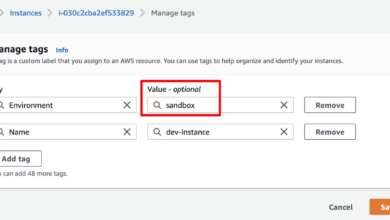
Ransomware Attack on Nvidia A Deep Dive
Ransomware attack on Nvidia – the words alone send shivers down the spine of anyone in the tech world. This wasn’t just another ransomware incident; it was a high-profile attack targeting a giant in the graphics processing unit (GPU) industry, leaving a trail of questions and concerns in its wake. We’ll explore the timeline of events, the data breached, the attackers’ motives, Nvidia’s response, and the lasting impact this attack had on cybersecurity practices across the globe.
Get ready for a detailed look at one of the most significant ransomware attacks in recent memory.
This wasn’t just about stolen data; it was about the potential disruption to countless industries reliant on Nvidia’s technology. From gaming and AI to scientific research and automotive design, the ripple effect of this attack could be felt far and wide. We’ll examine the specific impact on Nvidia’s operations and the steps they took to recover, analyzing their response and identifying crucial lessons learned for the future of cybersecurity.
Nvidia Ransomware Attack Timeline

The Nvidia ransomware attack, a significant event in the cybersecurity landscape, serves as a stark reminder of the vulnerabilities even large corporations face. This incident highlighted the potential disruption and financial repercussions of successful ransomware attacks, impacting not only the targeted company but also its customers and the broader tech industry. Understanding the timeline of events is crucial to grasping the attack’s scope and impact.
Nvidia Ransomware Attack Timeline Details
The following table provides a detailed timeline of the Nvidia ransomware attack, summarizing key dates and events. The information is compiled from various reputable news sources and cybersecurity reports. Note that some details surrounding the attack remain unclear due to Nvidia’s limited public disclosure.
| Date | Event | Impact | Response |
|---|---|---|---|
| February 2023 | Initial breach by Lapsus$ group | Compromise of internal systems and sensitive data, including source code and employee credentials. | Nvidia initially remained silent, likely to avoid escalating the situation and potentially aiding the attackers. |
| Late February/Early March 2023 | Data leak and ransomware demand | Leaked data included proprietary information, source code for various Nvidia technologies, and employee credentials. Ransom demand was reportedly significant. | Nvidia confirmed the breach and data leak, acknowledging the theft of intellectual property. They publicly denied paying the ransom. |
| March – April 2023 | Ongoing investigation and remediation | Disruption to internal operations, potential security vulnerabilities, and reputational damage. | Nvidia focused on securing its systems, restoring data, and enhancing its cybersecurity infrastructure. They also worked with law enforcement. |
| Following Months | Long-term recovery and security improvements | Ongoing costs associated with remediation, potential legal repercussions, and increased scrutiny from investors and regulators. | Nvidia continued to enhance its security posture and implement measures to prevent future attacks. |
Initial Breach and Attack Methods
The Lapsus$ group, known for its high-profile attacks targeting major technology companies, is believed to have been responsible for the Nvidia breach. While the exact methods used remain undisclosed by Nvidia, it’s likely that the attackers exploited vulnerabilities in Nvidia’s network security to gain initial access. Common techniques employed by ransomware groups include phishing campaigns, exploiting known software vulnerabilities, and compromising third-party vendors.
Once inside the network, the attackers likely used lateral movement techniques to access sensitive data and deploy ransomware.
Immediate Impact on Nvidia’s Operations and Customers
The immediate impact of the attack was multifaceted. The leak of sensitive data, including source code and employee credentials, posed significant risks to Nvidia’s intellectual property and security. The ransomware encryption likely disrupted internal operations, potentially affecting product development, customer support, and other critical business functions. For Nvidia’s customers, the attack raised concerns about the security of their data and the potential for supply chain disruptions.
The reputational damage from the attack also significantly impacted Nvidia’s stock price.
Data Breached and its Consequences: Ransomware Attack On Nvidia
The Nvidia ransomware attack, while initially focusing on the disruption of operations, ultimately revealed a far more significant threat: the theft of sensitive data. The breach went beyond simple operational interference, exposing the company to potentially devastating long-term consequences, impacting not only Nvidia’s reputation but also its financial stability and legal standing. Understanding the nature of the stolen data and its ramifications is crucial to grasping the full extent of this cyberattack’s impact.The leaked data reportedly included a significant amount of intellectual property, financial records, and potentially customer data.
While the exact nature and volume of the stolen information remain partially undisclosed, the implications are substantial and far-reaching. The attackers released some of the stolen data online, further amplifying the risks for Nvidia.
Types of Data Stolen and Their Sensitivity
The stolen data likely encompassed several categories, each carrying different levels of sensitivity and potential for misuse. This included source code for various Nvidia products, potentially including crucial elements of their GPU drivers and other proprietary technologies. Financial records, including internal budgets, sales figures, and potentially even sensitive financial partnerships, could also have been compromised. Finally, the potential exposure of customer data, such as personal information linked to purchases or support interactions, raises significant privacy concerns and legal liabilities.
The sheer volume and sensitivity of this information underscore the severity of the breach.
Potential Long-Term Consequences for Nvidia and Stakeholders, Ransomware attack on nvidia
The consequences of this data breach extend far beyond immediate operational disruptions. The long-term impact on Nvidia and its stakeholders could be significant:
- Reputational Damage: A major data breach severely damages a company’s reputation, leading to decreased trust among customers, investors, and partners. This can result in a loss of market share and difficulty attracting new business.
- Financial Losses: The costs associated with responding to the breach, including investigation, legal fees, remediation, and potential compensation to affected individuals, could be substantial. Further, the loss of intellectual property could lead to significant financial losses in the long term.
- Competitive Disadvantage: The release of source code could give competitors an unfair advantage, allowing them to reverse-engineer Nvidia’s technology or develop competing products more quickly.
- Legal and Regulatory Scrutiny: Nvidia faces potential legal action from customers, regulatory bodies, and shareholders. Depending on the jurisdictions involved and the specific data compromised, the company could face substantial fines and penalties.
- Loss of Customer Trust: The breach could lead to a loss of customer trust, potentially resulting in decreased sales and customer churn. Customers might be hesitant to continue using Nvidia products due to concerns about data security.
Potential Legal and Financial Repercussions
Nvidia faces a complex web of potential legal and financial repercussions following this data breach. These include:
- Class-action lawsuits: Affected customers might file class-action lawsuits seeking compensation for damages related to the breach, such as identity theft or financial losses.
- Regulatory fines: Depending on the location and applicable regulations (e.g., GDPR, CCPA), Nvidia could face substantial fines from regulatory bodies for failing to adequately protect customer data.
- Insurance claims: Nvidia will likely file insurance claims to cover the costs associated with the breach, but the extent of coverage will depend on the terms of its insurance policies.
- Shareholder lawsuits: Shareholders might sue Nvidia for failing to adequately protect company assets and for the resulting decline in stock value.
- Reputational costs: While not directly quantifiable, the reputational damage caused by the breach could translate into long-term financial losses through decreased sales and market share.
Attacker’s Motives and Methods
The Nvidia ransomware attack, while still shrouded in some mystery, points towards a sophisticated and financially motivated operation. While the exact perpetrators remain unconfirmed, the scale and precision of the attack suggest a highly organized group with significant technical expertise. Understanding their methods and motives is crucial for assessing the broader security implications and preventing future incidents.The attackers’ primary motive appears to be financial gain.
The theft of intellectual property and source code, coupled with the ransomware deployment, suggests a dual strategy aiming for both immediate ransom payment and long-term exploitation of the stolen data. The potential for future blackmail or the sale of the stolen data on the dark web significantly increases the potential financial rewards for the attackers. This aligns with the modus operandi of several known ransomware groups, who prioritize maximizing their profit through a combination of extortion and data theft.
Suspected Attackers and Motives
Identifying the specific group behind the attack is challenging, as many ransomware operations employ sophisticated techniques to mask their identity. However, the scale and sophistication of the attack, combined with the type of data stolen, suggest a highly organized and well-funded group. The attackers’ ability to penetrate Nvidia’s security infrastructure, exfiltrate sensitive data, and deploy ransomware without immediate detection indicates a level of expertise beyond that of typical opportunistic actors.
Their motives are clearly financial, targeting Nvidia’s valuable intellectual property and seeking a substantial ransom payment. The long-term implications of the data breach also offer potential for future revenue streams through data sales or blackmail.
Ransomware Capabilities and Encryption Methods
While the specific ransomware variant used in the Nvidia attack hasn’t been publicly identified, its capabilities are evident. The successful encryption of data, coupled with the exfiltration of sensitive information, demonstrates the ransomware’s ability to disrupt operations and leverage stolen data for extortion. The encryption method employed likely involved strong cryptographic algorithms, making decryption without the decryption key extremely difficult, if not impossible.
This type of sophisticated ransomware often uses asymmetric encryption, where a public key is used to encrypt the data, and a private key (held by the attackers) is needed for decryption. This makes the decryption process dependent entirely on the attackers’ cooperation. The use of robust encryption, combined with data exfiltration, represents a significant escalation in the sophistication of ransomware attacks.
Attack Vectors and Impact
The precise attack vector remains under investigation, but it’s likely a multi-stage attack leveraging several vulnerabilities. The attackers likely used a combination of techniques to gain initial access, move laterally within Nvidia’s network, and ultimately deploy the ransomware. The following table summarizes potential attack vectors, vulnerabilities, and their impacts:
| Method | Vulnerability Exploited | Impact |
|---|---|---|
| Phishing Email | Social engineering, vulnerability in email security software | Initial access to the network, potential for credential theft |
| Exploit of Software Vulnerability | Unpatched software vulnerability in a server or workstation | Remote code execution, potential for lateral movement |
| Compromised Credentials | Weak passwords, stolen credentials from previous breaches | Direct access to sensitive systems and data |
Nvidia’s Response and Recovery Efforts
Nvidia’s response to the ransomware attack was swift and multifaceted, aiming to contain the breach, restore systems, and minimize the long-term impact on the company and its customers. Their actions demonstrated a structured approach, combining technical expertise with a proactive communication strategy. The overall goal was to regain operational stability and rebuild trust.Nvidia’s recovery process involved a complex interplay of technical solutions and strategic decision-making.
The company had to balance the urgency of restoring services with the need for thorough security improvements to prevent future incidents. This required a careful assessment of the damage, followed by a phased approach to restoration and system upgrades.
Containment and Mitigation Steps
Nvidia immediately implemented several key steps to contain the attack and mitigate its impact. These actions were crucial in limiting the spread of the malware and preventing further data breaches. The speed and effectiveness of these initial responses were instrumental in shaping the overall success of the recovery effort.
- Isolation of affected systems: Nvidia quickly isolated the compromised systems from the rest of its network, preventing the ransomware from spreading further. This involved disconnecting affected servers and workstations from the internet and internal network.
- Malware analysis and removal: Security experts were deployed to analyze the ransomware and develop strategies for its complete removal. This involved identifying all infected files and systems, then deploying specialized tools and techniques to eliminate the malware.
- Security patching and updates: Following the malware removal, Nvidia implemented comprehensive security patching and updates across its entire infrastructure to close any potential vulnerabilities exploited by the attackers. This included updating operating systems, applications, and network devices.
- Enhanced security monitoring: Nvidia significantly strengthened its security monitoring capabilities, implementing advanced threat detection and response systems. This included deploying intrusion detection systems (IDS) and intrusion prevention systems (IPS) to monitor network traffic for malicious activity and automatically block suspicious connections.
Data Restoration and System Upgrades
The data restoration process was a significant undertaking, requiring careful planning and execution. Nvidia likely employed a combination of backups and data recovery techniques to restore critical data and systems. The process also involved rigorous verification to ensure data integrity and the absence of any residual malware.
Data restoration involved several phases, beginning with the recovery of critical systems and data from offline backups. This was followed by a meticulous verification process to ensure data integrity. Nvidia likely utilized multiple data recovery methods, including image-based restores and file-level recovery. System upgrades included not only the restoration of operating systems and applications but also the implementation of enhanced security measures.
This involved strengthening authentication protocols, implementing multi-factor authentication, and deploying advanced access control mechanisms. Nvidia likely also reviewed and updated their disaster recovery plan as part of this process.
Communication Strategy
Nvidia’s communication strategy was characterized by transparency and proactive engagement with its stakeholders. Open communication was vital in maintaining trust and managing the potential negative impact of the attack. The company’s approach demonstrated a commitment to keeping its customers and investors informed.
The company promptly issued public statements acknowledging the attack, outlining the steps taken to address it, and assuring stakeholders of its commitment to data security. These communications were carefully crafted to balance the need for transparency with the avoidance of providing information that could aid future attacks. Nvidia likely also engaged in direct communication with affected customers, providing updates on the progress of the recovery effort and offering support.
This included providing guidance on mitigating any potential impacts of the breach on their own systems and operations. The overall communication strategy aimed to minimize uncertainty and maintain confidence in Nvidia’s ability to handle the situation effectively.
Lessons Learned and Future Implications
The Nvidia ransomware attack serves as a stark reminder of the ever-evolving threat landscape facing the technology industry. While the specifics of the attack remain partially shrouded in mystery, the incident offers valuable insights into vulnerabilities and effective mitigation strategies. Analyzing this event allows us to refine our cybersecurity practices and anticipate future threats, ensuring greater resilience across the board.The implications of this attack extend far beyond Nvidia itself.
The theft of intellectual property and sensitive data highlights the potential for significant financial and reputational damage, impacting not only the victim but also its customers, partners, and the broader technological ecosystem. The attack underscores the urgent need for enhanced security measures across the industry, demanding a reassessment of current protocols and a proactive approach to threat prevention.
Key Lessons Learned from the Nvidia Ransomware Attack
The Nvidia attack provides several crucial lessons for organizations of all sizes. Understanding these points is vital for improving overall cybersecurity posture and reducing vulnerability to similar attacks.
- Robust Multi-Factor Authentication (MFA): The attack highlighted the critical need for robust MFA implementation across all systems and access points. A multi-layered approach, incorporating various authentication methods, significantly reduces the risk of unauthorized access even if one layer is compromised. This includes not only user accounts but also privileged accounts with elevated system access.
- Comprehensive Data Backup and Recovery Strategies: Regular, offline backups are essential. These backups should be stored securely and independently from the primary systems, preferably in geographically diverse locations, to protect against data loss even in the event of a successful ransomware attack. Testing the recovery process is crucial to ensure functionality and minimize downtime.
- Enhanced Network Segmentation: Implementing strong network segmentation prevents the lateral movement of malware within a network. By isolating critical systems and data, an attacker’s ability to cause widespread damage is significantly limited, even if they gain initial access. This involves carefully controlling network traffic and access permissions.
- Regular Security Audits and Penetration Testing: Proactive security assessments are crucial. Regular security audits and penetration testing by independent security experts can identify vulnerabilities before attackers exploit them. This proactive approach allows for timely remediation of weaknesses and strengthens overall security posture.
- Employee Security Awareness Training: Human error remains a significant factor in many cyberattacks. Comprehensive security awareness training for employees is vital to educate them about phishing scams, malware, and other social engineering techniques. Regular training and simulated phishing campaigns help build employee vigilance and reduce the likelihood of successful attacks.
Implications for the Broader Technology Industry
The Nvidia ransomware attack has significant implications for the broader technology industry. The theft of sensitive data and intellectual property highlights the potential for significant financial losses, reputational damage, and competitive disadvantages. It also underscores the interconnectedness of the industry and the potential for a single attack to have cascading effects across the ecosystem.The attack has prompted a renewed focus on supply chain security, as vulnerabilities in one company can expose its partners and customers.
This necessitates a collaborative approach to cybersecurity, with companies sharing threat intelligence and working together to strengthen the overall security of the technology ecosystem. The increasing sophistication of ransomware attacks demands continuous investment in cybersecurity technologies and expertise. This includes advanced threat detection systems, incident response plans, and robust security architectures.
Hypothetical Scenario and Preventative Measures
Let’s imagine a similar attack targeting a major cloud service provider, “CloudCorp.” A sophisticated phishing campaign targets employees with tailored emails containing malicious attachments. A single employee clicks on a malicious link, leading to the installation of ransomware that encrypts sensitive customer data and internal systems. The attackers demand a substantial ransom in exchange for the decryption key.Preventative measures for CloudCorp would include:* Enhanced Email Security: Implementing advanced email filtering and anti-phishing technologies to detect and block malicious emails before they reach employees.
This includes using AI-powered solutions to identify sophisticated phishing attempts.
Regular Security Awareness Training
Conducting regular and engaging security awareness training to educate employees about the latest phishing techniques and social engineering tactics. This would involve simulated phishing attacks to test employee vigilance.
Zero Trust Security Model
Adopting a zero-trust security model that assumes no user or device is inherently trustworthy. This would involve verifying every access request, regardless of its origin, using multi-factor authentication and other security measures.
Robust Data Backup and Recovery
Implementing a comprehensive data backup and recovery strategy that includes regular, offsite backups of critical data. This would ensure that data can be recovered quickly and efficiently in the event of a ransomware attack.
Incident Response Plan
Developing and regularly testing a comprehensive incident response plan that Artikels the steps to be taken in the event of a security incident. This would include procedures for containing the attack, recovering data, and communicating with stakeholders.
Illustrative Example: Impact on Nvidia GPU Drivers

The ransomware attack on Nvidia, while impacting various aspects of the company, had a particularly noticeable effect on the availability and integrity of its GPU drivers. These drivers are critical software components that allow the operating system to communicate with Nvidia’s graphics processing units (GPUs), enabling functionality for everything from gaming and professional design software to AI training and scientific computing.
The recent ransomware attack on Nvidia highlights the vulnerability of even tech giants. Building resilient systems requires robust security measures, and that’s where efficient development processes come in. Learning about the potential of domino app dev the low code and pro code future could help companies like Nvidia develop and deploy security updates faster, mitigating the impact of future attacks.
Ultimately, preventing ransomware hinges on proactive development and strong security practices.
Disruption to these drivers directly affected a vast user base and had significant repercussions across numerous industries.The attack compromised a substantial portion of Nvidia’s internal network, including servers containing source code and driver binaries. This led to a temporary halt in the release of updated drivers, security patches, and support for existing ones. Users experienced issues ranging from minor performance glitches to complete system instability, depending on the specific GPU model and operating system.
The lack of timely updates also created security vulnerabilities, leaving users exposed to potential exploits. Nvidia’s response involved securing its network, investigating the extent of the data breach, and working to restore its driver release infrastructure. This included rebuilding compromised systems, verifying the integrity of the source code, and rigorously testing new driver releases before deployment. The restoration process was complex and time-consuming, resulting in a period of driver scarcity and increased instability for users.
Nvidia Driver Release Disruption and Recovery
The disruption to Nvidia’s driver release cycle resulted in a significant backlog of updates and patches. This impacted both consumer and professional users. For gamers, this meant delays in accessing performance optimizations and bug fixes, while professional users in fields like AI and VFX faced potential project delays due to software compatibility issues. Nvidia’s recovery involved a phased rollout of new drivers, prioritized based on severity of issues and user impact.
The company also increased communication with its user base, providing regular updates on the situation and offering support resources. The recovery efforts involved significant manpower and computational resources, requiring engineers to work around the clock to rebuild systems, verify code, and thoroughly test new driver versions.
Financial Implications of Driver Disruption
To visualize the financial implications, imagine a bar chart. The x-axis represents time, spanning several weeks after the attack. The y-axis represents Nvidia’s revenue from driver-related services and sales of products dependent on up-to-date drivers. Before the attack, the bar is tall, representing strong sales and service revenue. Immediately after the attack, the bar drops dramatically, reflecting the loss of revenue from delayed driver releases, decreased sales of new products relying on updated drivers, and potential refunds or support costs.
As Nvidia’s recovery progressed, the bar gradually increases, but it doesn’t immediately reach pre-attack levels, indicating a lasting financial impact. The difference between the pre-attack revenue bar and the lowest point during the disruption represents the immediate financial loss due to the attack. The area under the curve representing the entire period of disruption and partial recovery visually demonstrates the overall financial impact.
This loss includes direct revenue reduction, increased operational costs for recovery, and potential loss of market share due to customer dissatisfaction and switching to competitor products. A realistic estimate, considering the scale of Nvidia’s business and the global impact of the driver disruption, would be in the tens or even hundreds of millions of dollars, although a precise figure would be difficult to obtain.
Ultimate Conclusion
The Nvidia ransomware attack serves as a stark reminder of the ever-evolving threat landscape in the digital world. While Nvidia ultimately recovered, the incident highlighted critical vulnerabilities and the potential for devastating consequences. The lessons learned from this attack – improved security protocols, enhanced data protection measures, and proactive threat intelligence – are crucial for companies of all sizes.
The future of cybersecurity hinges on continuous adaptation and a proactive approach to mitigating these risks. Let’s hope this incident spurs further innovation and collaboration in the fight against cybercrime.
Commonly Asked Questions
What type of ransomware was used in the Nvidia attack?
The specific ransomware used hasn’t been publicly disclosed by Nvidia or the attackers. This lack of transparency is common in these situations, often to avoid providing attackers with more information or tools.
Did Nvidia pay the ransom?
Nvidia has not publicly confirmed whether or not they paid the ransom. Paying ransoms is generally discouraged as it doesn’t guarantee data recovery and may embolden future attacks.
What long-term impact will this have on Nvidia’s reputation?
While the immediate impact was significant, Nvidia’s reputation will likely recover over time. Their response to the attack and subsequent security improvements will influence how this event is perceived in the long run.
How can other companies learn from Nvidia’s experience?
Companies should invest in robust cybersecurity infrastructure, including multi-factor authentication, regular security audits, employee training, and incident response planning. Proactive threat intelligence and vulnerability management are also critical.





